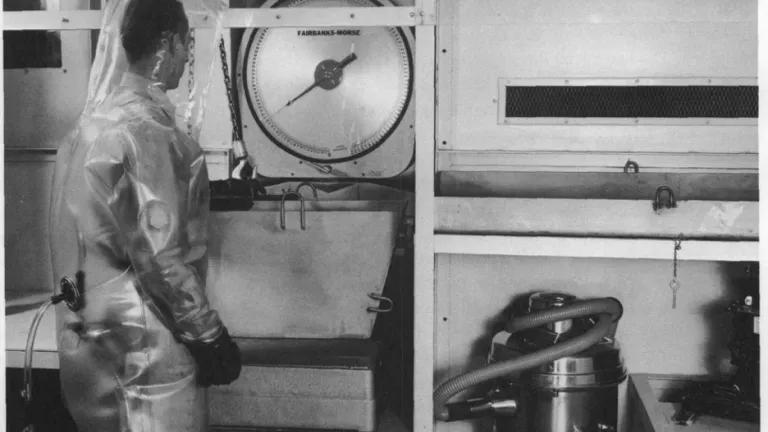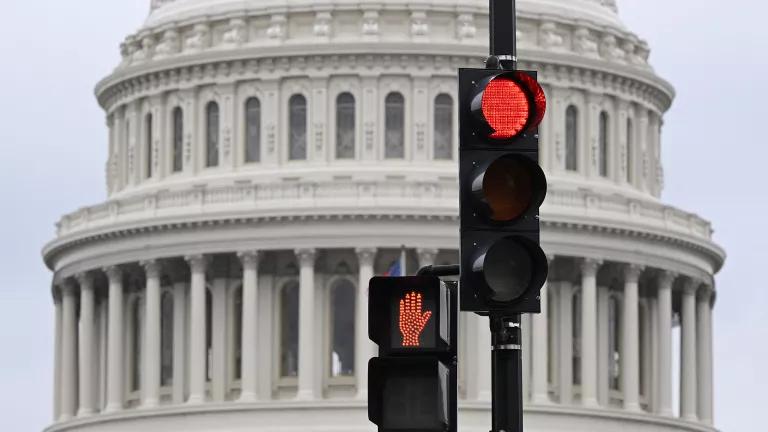Not So Advanced: Hype vs. Reality for Nuclear Technology
A recent report by the Union of Concerned Scientists (UCS) found little evidence that “advanced nuclear reactors” can be significantly safer than today’s nuclear plants. And these new designs face considerable uncertainty about commercial viability.

Photo: Review of Hazards Associated with Molten Salt Reactor Fuel Processing Operations, Oak Ridge National Laboratory
While aging US nuclear plants continue to close because they cannot compete in the market, proponents of so-called “advanced nuclear reactors” promise they are the future because of their significant benefits. However, a recent report by the Union of Concerned Scientists (UCS) found little evidence that “advanced nuclear reactors” can be significantly safer than today’s nuclear plants. And these new designs face considerable uncertainty about commercial viability.
NRDC agrees with the conclusions and recommendations of this report.
The UCS report compared the existing light-water reactor design to classes of proposed non-light-water reactors. These reactors include sodium-cooled fast reactors, high-temperature gas-cooled reactors, and molten salt-fueled reactors.
In its report, UCS characterized and compared the performance of the designs according to a number of categories:
- Safety and security risk - the vulnerability of reactors and fuel cycle facilities to severe accidents or terrorist attacks that result in significant releases of radioactivity to the environment.
- Sustainability - the amount of nuclear waste generated by reactors and fuel facilities that require secure, long-term disposal, as well as the efficiency of using natural (mined) uranium or thorium.
- Nuclear proliferation and nuclear terrorism risk - the danger that nations or terrorist groups could illicitly obtain nuclear-weapon-usable materials from reactors or fuel cycle facilities.
By using these criteria for classes of non-light-water designs, the report concluded that:
- The new designs currently under consideration do not offer obvious improvements over light-water reactors significant enough to justify their many risks.
- All non-light-water designs introduce new safety issues that will require substantial analysis and testing to fully understand and address.
- Some designs would entail reprocessing of nuclear fuel, which inherently poses greater proliferation and security risks.
- High-assay low enriched uranium fuel, which is needed for many new designs, poses higher nuclear proliferation and nuclear terrorism risks than the uranium fuel existing reactors require.
Policymakers and lawmakers should examine these conclusions before relying on the hype from nuclear proponents. On top of this, it could take many years and billions of dollars to safely commercialize any non-light-water design, and that should not be underestimated.
Thus far, non-light-water reactors can’t demonstrate that they are safe, sustainable, and resistant to nuclear weapons proliferation. Until that can be demonstrated, none of the so-called advanced reactors can be commercially viable.
There are no more significant threats today to the planet than climate change. Our focus must be to convert the world’s carbon-based energy system to a net-zero, clean and renewable energy system by 2050. Due to their risks and significant time and resource requirements, advanced reactor designs are not a proven technological solution to get us to net-zero greenhouse gas emissions in the timely manner the climate crisis demands.
Today nuclear power plants produce roughly 10% of global electricity and about 20% of electricity within the United States. Countries have to decide whether it is worth investing the time and resources to scale up nuclear power as part of their solution to address climate change. Important considerations in this analysis include public acceptance of reactors, the safe operation of nuclear plants, the nuclear waste problem and the economics of nuclear power. And should nuclear power increase worldwide, it could lead to an increased risk of nuclear weapons proliferation.
Given the trends for these issues, I assert that reliance on non-light-water nuclear energy technologies is not a viable strategy for addressing the climate crisis. The closing of currently operating reactors can be managed for a smooth transition to renewable energy with vast energy efficiency gains, and models of economy-wide decarbonization provide low-nuclear roadmaps for achieving climate change solutions through renewable energy, electrification of buildings and transportation, and improved transmission.



